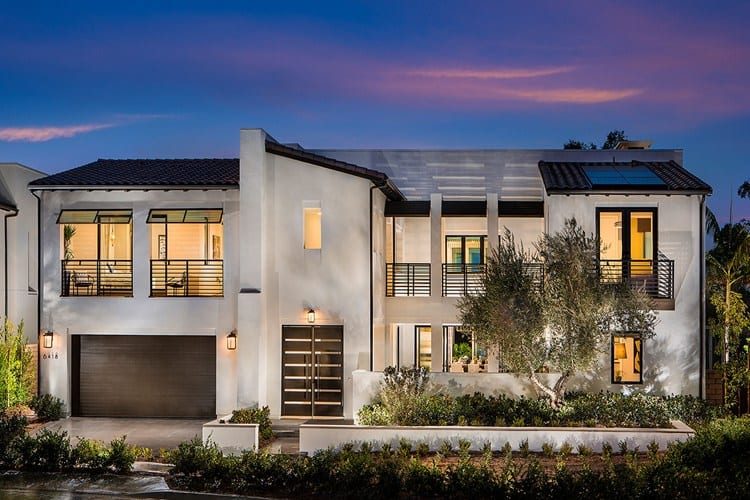
Photo: Pardee Homes
Spend a few minutes at an open house or two and it isn’t long before you realize that a new home offers lots of features that buyers want today — open floor plans, flexible spaces, kitchens and baths that dazzle, high ceilings and lots of light. But what you don’t see is equally important.
“You don’t see what’s behind the drywall — all of the new attachments we have to put in to tie the house together, how we have to install doors and windows,” explains Ron Lieberman, president of the Florida Home Builders Association, about new features mandated by Florida building codes that help homes in the state ride out tropical storms and hurricanes. Add in high-performance windows and doors, insulation, sealing of the building shell, high efficiency heating and cooling to see that what’s behind the scenes might even matter more than what you do see.
Building science is constantly improving products and the way they are installed, which means that a home built today is much more efficient than one constructed only a few years ago. For example, an Energy Star certified new home is 15 percent more energy efficient than a home built to the 2009 standards, but improvements in building codes in general have upped the energy quotient of all new homes.
“The new codes that … all builders have to adhere to are already significantly improved from a home built just five or 10 years ago, so consumers are already getting a huge advantage if the homes just comply with the local building codes,” says Michelle Simms, chief operating officer of Terramor Homes in Raleigh, N.C. “There are lots of different levels builders can use. Sometimes it’s based on geography and sometimes it depends on price point,” she explains.
Add high-performance windows and doors, insulation, sealing of the building shell, high efficiency heating and cooling into the homebuying equation and you’ll see that what’s behind the scenes might even matter more than what you do see. There are dozens, if not hundreds, of certifications for energy efficiency offered by local utilities, state and local coalitions, such as the Florida Green Building Coalition, and national programs such as the National Association of Home Builders National Green Building Program, Energy Star Certified homes and the U.S. Green Building Council’s Leadership in Energy & Environmental Design (LEED) program. Each has a different criteria and methods of certification.
One common marker is the RESNET HERS (Home Energy Rating System) index, which the Department of Energy recently adopted as an industry standard as a sort of “miles per gallon” rating for homes. A HERS index score is based upon an assessment by a certified home energy rater. A typical 10-year-old home has a HERS score of 130. In 2016 more than 206,000 new home were HERS rated and issued an index score. The average score was 61. As RESNET Executive Director Steve Baden pointed out, “This is 39 percent more efficient than homes built as recently as 2006 and 69 percent more efficient than a typical home built in 1970.”
Building codes mandated by the Department of Energy are also tailored to climate in different regions. In Florida, concerns center around upward wind pressure from tropical storms that would lift the roof off a house; in New England, codes center around the downward pressure of snow loads on roofs. In California, earthquakes play into code requirements. These are additional benefits of new construction that consumers are typically not aware of.
Years ago, builders could trade off features to meet a certain level of efficiency for the house overall. “Today,” Lieberman says, “we don’t have the tradeoffs we used to have. All new houses are going to have pretty efficient windows, all new houses are going have very efficient HVAC systems and all new houses are going to have additional insulation requirements.”
While you may square up a home based on the square footage and design features, don’t forget to consider the other things, like energy-efficient features, that will help you save resources and money.

Camilla McLaughlin is an award-winning writer specializing in house and home. Her work has appeared in leading online and print publications, such as Yahoo! Real Estate, Unique Homes magazine and Realtor magazine. She has also freelanced for the Associated Press.

 How to Have a Successful Walkthrough
How to Have a Successful Walkthrough